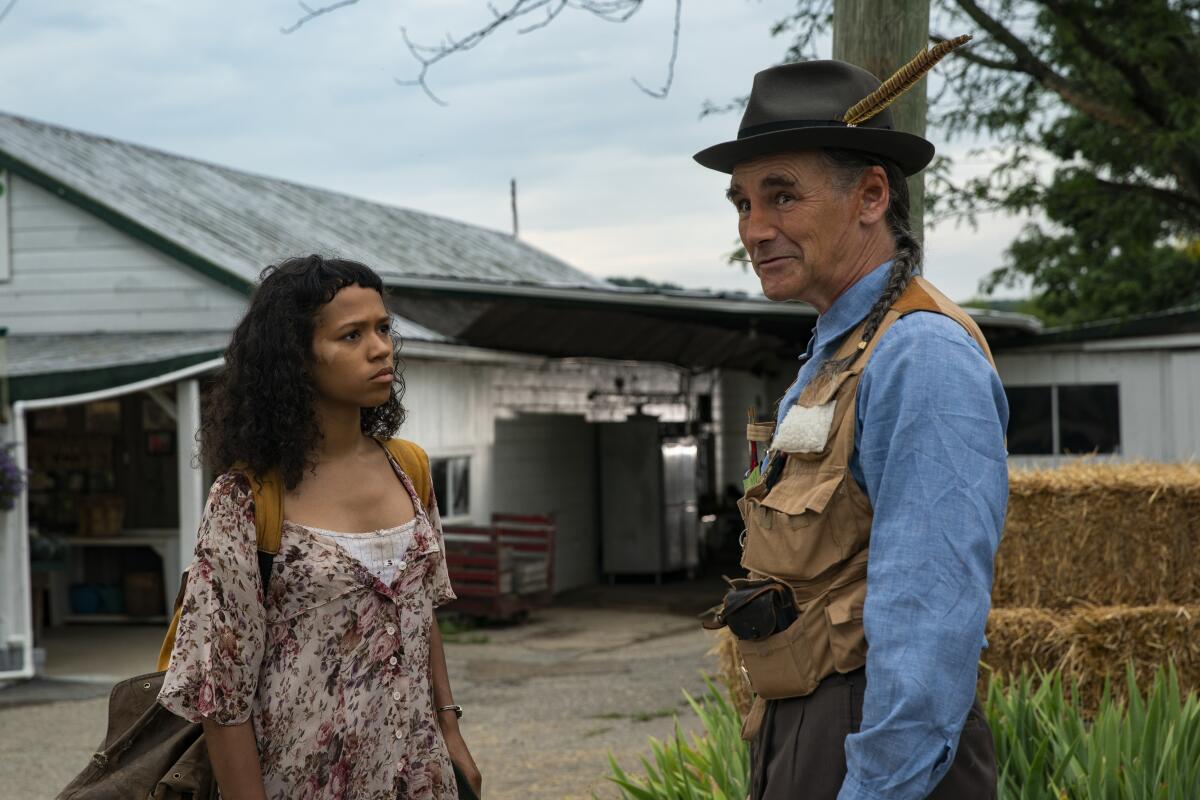How a piece of cake jettisoned fear and let joy in for ‘Bones and All’ writer

- Share via
An ironic outcome of writing the film adaptation of Camille DeAngelis’ young-cannibals-in-love novel “Bones and All” was realizing that resetting its story in 1988 would mean the film’s primary audience would not have their own memories of that time. 1988 would be as “historic” to them as 1954 was to me when I was 18, and it’s sobering to realize your formative years happened before half the current world was born.
But I wanted to evoke America in that decade, when trickle-down Reaganomics had pushed so many people out of the American Dream. And without the open channels the internet would soon bring, there were fewer ways for the disenfranchised to find one another, to see and be seen.
The ‘Bones and All’ director is more attracted to the idea of the impossibility of one’s nature than the blood and unnaturalness of his characters.
I felt if I was to write an adaptation that could connect with young people navigating the issues of identity and belonging the film explores, it couldn’t be as a 52-year-old trying to memorialize how things were then but somehow as the 18-year-old I’d been in 1988 first discovering how things are. This isn’t to say making the film regressed me, but it did become a surprisingly powerful time machine.
I distrust nostalgia for the ‘80s. I found its bright, exploded pop response to the disillusioned ‘70s creepy. And 1988 was, personally, a terrible year. Growing up in the closet, in rural Ohio, was a time of hypervigilance, of seeking out anyone who might wish the “real” me well, while staying invisible to those who wouldn’t. And this was on the comparatively simple calculus of merely being gay, which I could hide inside an otherwise safe profile of a physically enabled, white, middle-class American male. Others had it worse.

The protagonist of “Bones and All” is Maren, an underprivileged teenager of mixed race, who’s confronted with bodily — in her case, cannibalistic — urges she cannot deny that will push her out of conventional society into a life of fearful instability. My own teenage experience gave me a way to relate to Maren’s isolation, but because I’ve been a screenwriter for 20 years, and a human being for longer, I knew it did not give me permission to eclipse her story — and the intentions of the novel’s author — with my own. The lens through which I was decoding the story’s cannibalism — a genre amplification for so many “othering” elements in young people’s lives — was only one way, and not even a crucial way, to understand Maren.
Real empathy is an act of soulful education; it’s not projection, even well-meaning projection. If I was going to be a good steward of Maren’s story, there was a lot I needed to learn, and I undertook that work. But while my plan was to write with earned, rigorous empathy for Maren, the project had its own plan for me.
I first sensed I was approaching a reckoning at the initial props walkthrough. Our props team had conducted exhaustive research, and their level of accuracy was uncanny. These weren’t just facsimiles of material culture from the 1980s Midwest, this was a staggering parade of the emotional and psychological totems of the worst years of my life: the off-brand toiletries; the spongy orange headphones; the exact tablecloth my mother used; the period-correct Lucky Charms painstakingly cut with an X-Acto knife by a PA. I had to retreat to a bathroom stall for 20 minutes to straighten myself out. The actual sets were turbocharged and ushered me further backward. Whole arcs of teenage emotion I hadn’t accessed in decades rushed in.
‘That’s something that’s on my mind. It’s important to crave, whatever that means,’ the ‘Bones and All’ actor says.
The pinnacle came in the form of a reproduction of an Entenmann’s Banana Cake, something you can’t buy anymore, with its iconic scalloped icing. This was the cake I’d eaten in my bedroom in a defiant party-for-one after admitting to a friend I was in love with him. His response was the best I could’ve hoped for from a kindhearted, straight kid with a Catholic upbringing: “Pretend you didn’t say it and I’ll pretend I didn’t hear it.” That night, over this cake, I decided I could pretend where he was concerned, but not where I was, and that once I got out of that town to where more people were like me, I’d put down fear and choose boldness instead, and be a friend to myself. I had included that cake in the script casually, but seeing Taylor Russell and Timothée Chalamet, who play the film’s persevering lovers, digging into it with joy made my subconscious agenda forcefully clear.
It was not just that the 18-year-old me wanted to speak with 18-year-olds today. If that can happen, that is a privilege. It was also that the 52-year-old me needed to find an alternative to nostalgia that is not just pain in returning home, as the Greeks understood it, but that one can return and find joy that one has persevered and make something from that. Among the gifts my career has given me, this was the most unexpected, and personal: a cake, in a movie, barely in frame, becoming emblematic — a reminder of everything that can come in when the fear has gone.
More to Read
From the Oscars to the Emmys.
Get the Envelope newsletter for exclusive awards season coverage, behind-the-scenes stories from the Envelope podcast and columnist Glenn Whipp’s must-read analysis.
You may occasionally receive promotional content from the Los Angeles Times.








